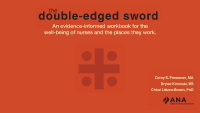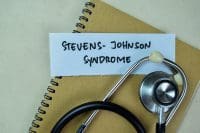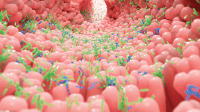Continuing Nursing Education
Learning objectives 1. Differentiate between enteral and parenteral nutrition. 2. Discuss how to manage hypoglycemia and hyperglycemia in patients with diabetes who are receiving supplemental nutrition. 3. Describe insulin use in patients with diabetes who are receiving supplemental nutrition. Purpose/goal: To provide nurses with information on how to better care for patients with diabetes who are receiving supplemental nutrition. The author and planners of this CNE activity have disclosed no relevant financial relationships with any commercial companies pertaining to this activity. See the end of this article to learn how to earn 1.19 CNE credit. Expiration: 12/1/17
Hospital patients receiving nutritional support are at increased risk of hyperglycemia and its consequences, including increased infections and mortality. This article reviews indications for supplemental nutrition, types of supplements available, and treatment of hyperglycemia and hypoglycemia associated with supplemental nutrition.
Significance of nutritional status
In hospital patients, poor nutrition is linked to increased risks of morbidity, mortality, and longer stays. Approximately 30% to 50% of hospital patients are malnourished and have a 27% higher risk for malnutrition complications. Malnutrition leads to immune dysfunction by impairing the function of neutrophils, macrophages, and lymphocytes. Also, metabolic stress increases energy expenditure, which causes lean-tissue catabolism. Providing ideal nutrition is an important goal of patient care. To achieve ideal nutritional status in patients unable to consume food orally, two supplemental nutrition regimens are available—parenteral nutrition (PN) and enteral nutrition (EN). Guidelines for Nutrition Support Therapy in Critically Ill Patients from the American Society of Parenteral and Enteral Nutrition (ASPEN) and the Society of Critical Care Medicine (SCCM) recommend early initiation of enteral nutrition. But for critically ill patients who were well-nourished at baseline, the guidelines suggest initiating parenteral nutrition therapy after 7 days with no oral intake.
Parenteral nutrition
Generally, PN is used in patients who can’t tolerate feedings due to a nonfunctioning GI tract or who need to rest the bowel, such as those with bowel obstruction or graft-vs-host disease of the gut and those recovering from GI surgery. The composition of PN formulas is a mixture of dextrose, vitamins, minerals, amino acids, electrolytes, and trace elements. The exact breakdown of each element depends on the patient’s individual nutritional needs. For glucose control, the most crucial factor is the amount of dextrose in the PN solution, which generally hinges on illness severity and caloric needs. Average dextrose delivery is 3.4 kcal/g. For patients who need a higher caloric intake (such as those with severe burns), the dextrose delivery rate should be increased. Usually, PN is given through a central venous catheter due to its high osmotic load and potential for causing thrombosis of peripheral veins.
Enteral nutrition
In EN, nutrients are delivered through the intestines via the stomach (gastric feeding) or through the distal portion of the intestines (postpyloric feeding). Gastric feedings generally are given through a nasogastric tube, but can be delivered by a gastric tube as well. Postpyloric feedings can be given through a nasoduodenal or nasojejunal tube or a jejunostomy. Nutrients in EN solutions include calories, protein, electrolytes, vitamins, and minerals. Various tube-feeding formulas can be given, including those with lower carbohydrate content, predigested, and with or without fiber. Selection depends on the patient’s disease state. Most formulas deliver 100% of the recommended daily vitamins and minerals if the patient is receiving 1,000 or more kcal/day. With most EN regimens, carbohydrate delivery accounts for 49% to 53% of calories. Usually, the EN delivery rate is calculated using a caloric goal of 18 to 25 kcal/kg/day. Also, EN can be delivered in bolus form at standardized meal times as the sole form of nutrition, or it can be given in addition to oral intake of regular food. Compared to PN, EN is more physiologic and allows greater patient mobility, which may make it more appropriate for both the rehabilitation and home settings.
The danger of hyperglycemia
Nutrition support can cause an array of complications, including an elevated blood glucose (BG) level (hyperglycemia). Experts estimate that up to 30% of patients receiving EN and more than 50% of those receiving PN develop hyperglycemia, defined as a BG level above 200 mg/ dL. Compared to EN, PN increases hyperglycemia risk nearly twofold, even when caloric intake is similar. Untreated PN-induced hyperglycemia is linked to a 33% increase in mortality—from hyperglycemia itself or from an infection, sepsis, or cardiac complications. In patients with BG levels above 164 mg/dL, mortality is up to 11 times higher. One study found inadequate glucose control both before and during nutrition therapy predicted a higher mortality risk. Patients with BG levels between 151 and 180 mg/dL before PN initiation and whose levels remained above 180 mg/dL during PN therapy had an increased risk of death. In addition, BG levels above 180 mg/dL during PN therapy are linked to increased risk of pneumonia, acute renal failure, ICU admissions, and prolonged hospital stays. The cause of hyperglycemia in patients receiving nutrition support is complex. (See the box below.)
Why does hyperglycemia develop?In patients receiving nutrition support, metabolic stress from illness and hospitalization activates the sympathetic nervous system and triggers release of counter-regulatory hormones. This in turn causes gluconeogenesis and glycogenolysis—processes that raise circulating glucose levels. Hyperglycemia also elevates levels of inflammatory cytokines, increasing the risk of cardiac events and worsening peripheral insulin resistance. In addition, disproportionately elevated delivery of glucose and gluconeogenic substrates (amino acids and fatty acids) secondary to increased caloric demand from enteral or parenteral nutrition formulas raises blood glucose levels. Parenteral nutrition may further worsen hyperglycemia due to loss of the normal incretin response to oral feeding. Incretin hormones, such as glucagon-like peptide-1 and gastric inhibitory polypeptide, suppress the action of glucagon, decreasing gluconeogenesis. |
Managing glucose abnormalities
Although glucose abnormalities are common in patients receiving supplemental nutrition, treatment recommendations are limited. A 2009 consensus statement from the American Association of Clinical Endocrinologists and American Diabetes Association (AACE/ADA) recommends a target BG level between 140 to 180 mg/dL in critically ill patients. BG targets for noncritically ill patients are a premeal BG level between 100 and 140 mg/dL and random BG readings below 180 mg/dL, as long these targets are attainable without increasing the hypoglycemia risk. The consensus statement strongly recommends insulin therapy to treat PN-associated hyperglycemia but doesn’t give recommendations for insulin types or delivery routes. Insulin, given either as an I.V. infusion or a subcutaneous injection, is the safest and most effective way to treat hyperglycemia in the hospital setting. Insulin doses can be adjusted rapidly to changes in BG levels or food intake. For critically ill patients, the AACE/ADA consensus statement recommends starting I.V. insulin therapy to treat hyperglycemia. Typically, I.V. infusions are most effective when a written or computerized I.V. insulin protocol is used. Patients receiving I.V. infusions should undergo frequent glucose monitoring and insulin dosage adjustments based on the glycemic rate of change; hypoglycemia treatment guidelines should be followed. Insulin treatment for patients receiving EN Only one randomized controlled trial evaluating treatment of EN-related hyperglycemia has been done. The researchers compared insulin glargine to sliding-scale regular insulin. While both groups had similar glucose control, patients in the sliding-scale regular treatment arm required the addition of an intermediate-acting insulin, such as neutral-protamine Hagedorn (NPH), to achieve target BG levels. Other retrospective and prospective studies have yielded varying recommendations. Most found that starting long-acting insulin with short-acting insulin as a correction treatment is effective. But 24-hour basal insulin may increase hypoglycemia risk if EN is interrupted unexpectedly. Another study suggested premixed 70/30 insulin given two or three times daily may be safer than long-acting insulin in patients on continuous tube feedings. A recommended starting total daily dose of insulin can be calculated at 0.3 to 0.6 units/kg. The starting dose may vary for patients with preexisting diabetes, type 1 diabetes, or renal insufficiency or failure, as well as for those receiving other medications affecting glycemic control (for example, corticosteroids). If EN is given nocturnally, NPH or premixed 70/30 insulin can be administered to coincide with the start of the feeding. If feeding time is more than 10 hours, an additional injection of NPH or premixed 70/30 insulin may be required halfway through the feeding. Bolus tube feedings should be covered the same way as ingested meals, with a dose of rapid-acting analog insulin given with each bolus feeding. Insulin treatment for patients receiving PN Due to the increased incidence of hyperglycemia associated with PN, studies on treatment options for glucose control with PN are more prevalent than those for EN. The ASPEN guidelines suggest monitoring BG levels at least three times a day when PN begins. Many options for insulin therapy exist for patients receiving PN, including insulin infusions, subcutaneous insulin, and addition of insulin to the total PN bag. As mentioned earlier, an insulin infusion should be started for glucose control in critically ill patients. Adding regular insulin to the PN solution is a reliable treatment option. If the patient previously received an insulin infusion, the 24-hour total daily dose (TDD) can be used to calculate how much insulin to add to the PN solution. Of the insulin TDD, 75% can be added. For patients with preexisting diabetes, the recommended starting dose for insulin in the PN solution is 0.2 units/g of dextrose. For patients with no previous history of diabetes, a more conservative starting dose is 0.1 units/g of dextrose. If insulin can’t be placed in the PN solution, subcutaneous insulin in the form of 24-hour basal insulin or premixed 70/30 insulin two or three times daily can be used to control hyperglycemia, as with patients receiving EN. With the treatment regimens described above, adding a conservative, rapid-acting insulin correction scale every 4 to 6 hours is recommended. Correction insulin refers to insulin given to correct hyperglycemia. An example of a rapid-acting insulin scale is one that gives 1 unit of rapid-acting insulin for every 50 points above a BG goal of 180 mg/dL. Correction doses keep BG levels within recommended ranges and can be used as a guideline for adjusting insulin doses for the next day. Rapid-acting insulin is ideal because of its consistent quick onset and duration of approximately 4 hours in most patients. Remember that patients with type 1 diabetes require basal insulin at all times. Most subcutaneous orders recommend withholding basal insulin if nutritional therapy is interrupted. This can be extremely dangerous in patients with type 1 diabetes, possibly leading to diabetic ketoacidosis. While the dosage may need to be lowered due to lack of nutrition therapy, the patient should keep receiving a basal dose.
Detecting and managing hypoglycemia
Hypoglycemia is a significant risk for any patient receiving insulin. In hospital patients, it’s defined as a BG level below 70 mg/dL. Hypoglycemia can lengthen hospital stays and increase mortality. For patients receiving EN or PN, hypoglycemia risk may increase if nutrition therapy is interrupted unexpectedly. Risk also rises if the feeding tube becomes clogged or dislodged or if the patient removes it, if delivery rates vary due to increased patient nausea or vomiting, or if the formulation changes. Refeeding syndrome also may cause hypoglycemia. (See the box below.)
Refeeding syndromeRefeeding syndrome can lead to hypoglycemia in patients receiving nutrition support. It can occur when a previously malnourished patient receives a high carbohydrate load. Patients at risk include those who haven’t been fed for 7 or more days, oncology patients on chemotherapy, and patients with chronic malnutrition. When glucose levels decrease during a period of starvation, pancreatic alpha cells release glucagon. Glucagon promotes conversion of liver and muscle glycogen to glucose, which is released in the bloodstream to raise blood glucose levels. With the rise in glucagon levels comes a drop in insulin levels. When nutrition is restarted, glucose levels increase and insulin production rises. Insulin lowers glucose levels by driving cellular uptake of glucose to use for energy; it also initiates conversion of glucose to glycogen for storage in the liver and muscle. With glycogen stores depleted from malnutrition, cellular uptake of glucose may increase, depleting circulating levels and leading to hypoglycemia. To reduce the chance for refeeding syndrome in patients at risk, start feedings at a lower rate—typically, 20% of energy expenditure or less. |
To promote early detection and treatment of hypoglycemia, make sure you’re familiar with hypoglycemia signs and symptoms and the protocols that nursing staff can initiate to manage it. (See the box below.)
Detecting hypoglycemiaSigns and symptoms of hypoglycemia fall into two main categories—neurogenic and neuroglycopenic. Neurogenic signs and symptoms result from acetylcholine, epinephrine, and norepinephrine release. They include: • anxiety • hunger • paresthesia • palpitations • sweating • tremors. Neuroglycopenic signs and symptoms arise as cerebral neurons become glucose-deprived. They include: • behavioral changes • confusion • fatigue • loss of consciousness • seizures. |
Protocols for hypoglycemia treatment vary with the hospital setting but generally include dextrose administration. All insulin orders for patients on EN therapy should include initiation of dextrose 10% solution at the same rate as the EN feeding, if EN therapy is suddenly interrupted. For patients on PN, hypoglycemia risk rises if the insulin dosage in the PN solution isn’t adjusted along with the dextrose amount. An I.V. solution containing dextrose may need to be hung simultaneously with the PN. Additional treatment options for patients who can’t tolerate oral intake include a glucagon injection or dextrose 50% via I.V. bolus.
Patient and family education
Although you may not be able to educate a patient who’s severely ill, you can teach family members or other support persons about the patient’s condition. Insulin injections can be alarming for loved ones to witness, especially if the patient had no previous history of diabetes. A patient on an intensive insulin protocol may need to have hourly fingersticks to check the BG level. As a nurse, you’re in a unique position to teach family members the goal, rationale, and method of insulin treatments and other interventions. Explain that insulin use can achieve good glycemic control, which can reduce the infection risk, increase caloric absorption, and aid healing. Also describe the patient’s insulin regimen, including dosing, timing, and route, to decrease family members’ anxiety. Finally, review blood glucose goals for the patient to help loved ones understand the need for intervention.
The nurse’s role
Hospital patients receiving supplemental nutrition pose a unique challenge, because hyperglycemia in this population is linked to poor outcomes. Few observational clinical trials have addressed glycemic targets and outcomes for these patients. Insulin is the recommended treatment regimen, although the ideal regimen hasn’t been defined. Further studies are needed to evaluate the best way to treat hyperglycemia linked to nutritional support. Nurses on the front lines of care can play an essential role by detecting hyperglycemia early and advocating for proper treatment to prevent adverse outcomes. Regardless of the type of insulin therapy your patient receives, monitor his or her clinical condition frequently—not just to maintain adequate glycemic control but also to help prevent hypoglycemia. Selected references Baldwin D, Kinnare K, Draznin B, et al. Insulin treatment of hyperglycemia in hospitalized patients receiving total parenteral nutrition (TPN) [Abstract]. Diabetes. 2012;61:A275. Boateng AA, Sriram K, Meguid MM, et al. Refeeding syndrome: treatment considerations based on collective analysis of literature case reports. Nutrition. 2010;26(2):156–67. Chernoff R. An overview of tube feeding: from ancient times to the future. Nutr Clin Pract. 2006;21(4):408-10. Cheung NW, Napier B, Zaccaria C, et al. Hyperglycemia is associated with adverse outcomes in patients receiving total parenteral nutrition. Diabetes Care. 2005;28(10):2367-71. Gosmanov AR, Umpierrez GE. Management of hyperglycemia during enteral and parenteral nutrition therapy. Curr Diab Rep. 2013;13(1):155-62. Hsia E, Seggelke SA, Gibbs J, et al. Comparison of 70/30 biphasic insulin with glargine/lispro regimen in non-critically ill diabetic patients on continuous enteral nutrition therapy. Nutr Clin Pract. 2011;26(6):714-7. Korytkowski MT, Salata RJ, Koerbel GL, et al. Insulin therapy and glycemic control in hospitalized patients with diabetes during enteral nutrition therapy: a randomized controlled clinical trial. Diabetes Care. 2009;32(4):594-6. Kumar PR, Crotty P, Raman M. Hyperglycemia in hospitalized patients receiving parenteral nutrition is associated with increased morbidity and mortality: a review. Gastroenterol Res Pract. 2011;2011:1. Low Wang CC, Draznin B. Insulin use in hospitalized patients with diabetes: navigate with care. Diabetes Spectr. 2013;26(2):124-30. Magaji V, Johnston JM. Inpatient management of hyperglycemia and diabetes. Clin Diabetes. 2011:29(1):3-9. McClave SA, Martindale RG, Vanek VW, et al. Guidelines for the Provision and Assessment of Nutrition Support Therapy in the Adult Critically Ill Patient: Society of Critical Care Medicine (SCCM) and American Society for Parenteral and Enteral Nutrition (A.S.P.E.N.) JPEN J Parenter Enteral Nutr. 2009;33(3):277-316. Moghissi ES, Korytkowski MT, DiNardo M, et al; American Association of Clinical Endocrinologists; American Diabetes Association. American Association of Clinical Endocrinologists and American Diabetes Association consensus statement on inpatient glycemic control. Endocr Practice. 2009;15(4):353-69. Mueller C, Compher C, Ellen DM; American Society for Parenteral and Enteral Nutrition (A.S.P.E.N.) Board of Directors. A.S.P.E.N. clinical guidelines: Nutrition screening, assessment, and intervention in adults. JPEN J Parenter Enteral Nutr. 2011;35(1):16-24. Pasquel FJ, Spiegelman R, McCauley M, et al. Hyperglycemia during total parenteral nutrition: an important marker of poor outcome and mortality in hospitalized patients. Diabetes Care. 2010;33(4);739-41. Seaquist ER, Anderson J, Childs B, et al. Hypoglycemia and diabetes: a report of a workgroup of the American Diabetes Association and the Endocrine Society. Diabetes Care. 2013;36(5):1384-95. Seres D. Nutrition support in critically ill patients: Enteral nutrition. UpToDate. Last updated October 20, 2014. www.uptodate.com/contents/nutrition-support-in-critically-ill-patients-enteral-nutrition?source=search_result&search=enteral+nutrition&selectedTitle=1%7E150. Accessed November 1, 2014. Seres D. Nutrition support in critically ill patients: Parenteral nutrition. UpToDate. Last updated April 9, 2014. www.uptodate.com/contents/nutrition-support-in-critically-ill-patients-parenteral-nutrition?source=search_result&search=tpn&selectedTitle=4%7E150. Accessed November 1, 2014. Stacey A. Seggelke is a clinical nurse specialist in the Adult Diabetes Program of the University of Colorado Denver School of Medicine. CNE Instructions To take the post-test for this article and earn contact hour credit, please click here. Simply use your Visa or MasterCard to pay the processing fee. (ANA members $15; nonmembers $20.) Once you’ve successfully passed the post-test and completed the evaluation form, you’ll be able to print out your certificate immediately. Provider accreditation The American Nurses Association’s Center for Continuing Education and Professional Development is accredited as a provider of continuing nursing education by the American Nurses Credentialing Center’s Commission on Accreditation. ANCC Provider Number 0023. Contact hours: 1.19 ANA’s Center for Continuing Education and Professional Development is approved by the California Board of Registered Nursing, Provider Number CEP6178 for 1.43 contact hours. Post-test passing score is 75%. Expiration: 12/1/17 ANA Center for Continuing Education and Professional Development’s accredited provider status refers only to CNE activities and does not imply that there is real or implied endorsement of any product, service, or company referred to in this activity nor of any company subsidizing costs related to the activity. The planners and author of this CNE activity have disclosed no relevant financial relationships with any commercial companies pertaining to this CNE.


















